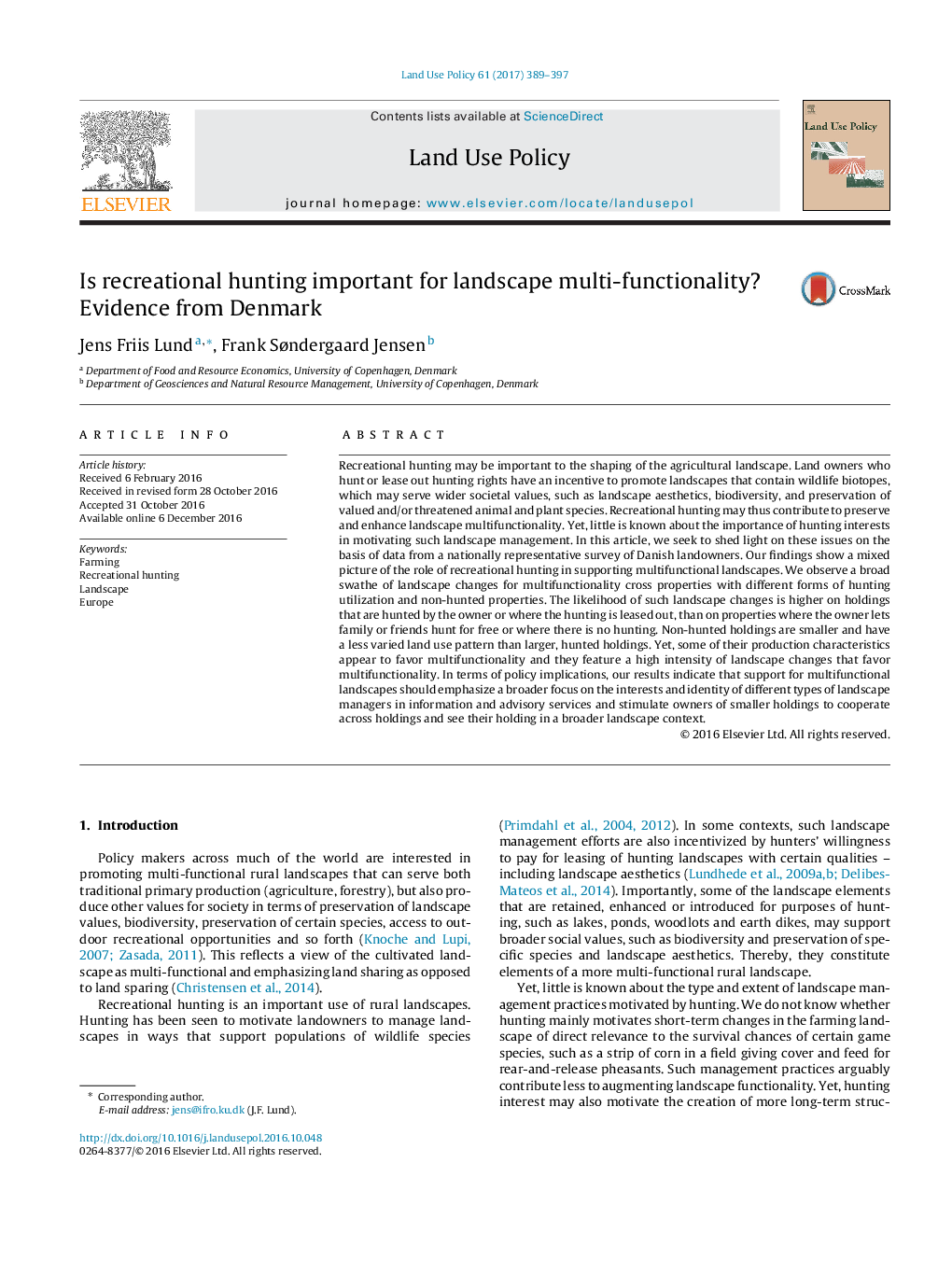| کد مقاله | کد نشریه | سال انتشار | مقاله انگلیسی | نسخه تمام متن |
|---|---|---|---|---|
| 6461332 | 1421822 | 2017 | 9 صفحه PDF | دانلود رایگان |
- We examine whether recreational hunting motivates landowners to create and maintain multifunctional landscapes.
- Holdings hunted by the owner or with hunting leases are more likely to have seen landscape changes for multifunctionality.
- Non-hunted holdings are smaller and have a high intensity of landscape changes for multifunctionality.
- We conclude that the role of hunting in motivating landscape changes or multifunctionality is complex.
Recreational hunting may be important to the shaping of the agricultural landscape. Land owners who hunt or lease out hunting rights have an incentive to promote landscapes that contain wildlife biotopes, which may serve wider societal values, such as landscape aesthetics, biodiversity, and preservation of valued and/or threatened animal and plant species. Recreational hunting may thus contribute to preserve and enhance landscape multifunctionality. Yet, little is known about the importance of hunting interests in motivating such landscape management. In this article, we seek to shed light on these issues on the basis of data from a nationally representative survey of Danish landowners. Our findings show a mixed picture of the role of recreational hunting in supporting multifunctional landscapes. We observe a broad swathe of landscape changes for multifunctionality cross properties with different forms of hunting utilization and non-hunted properties. The likelihood of such landscape changes is higher on holdings that are hunted by the owner or where the hunting is leased out, than on properties where the owner lets family or friends hunt for free or where there is no hunting. Non-hunted holdings are smaller and have a less varied land use pattern than larger, hunted holdings. Yet, some of their production characteristics appear to favor multifunctionality and they feature a high intensity of landscape changes that favor multifunctionality. In terms of policy implications, our results indicate that support for multifunctional landscapes should emphasize a broader focus on the interests and identity of different types of landscape managers in information and advisory services and stimulate owners of smaller holdings to cooperate across holdings and see their holding in a broader landscape context.
Journal: Land Use Policy - Volume 61, February 2017, Pages 389-397
